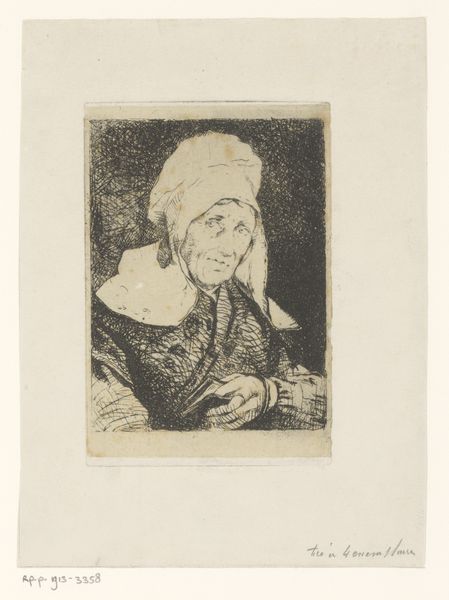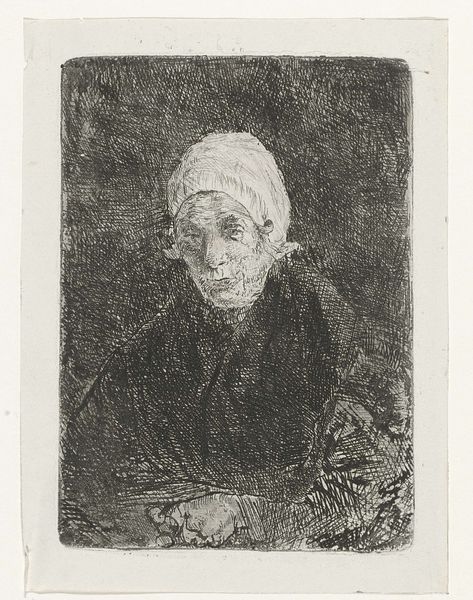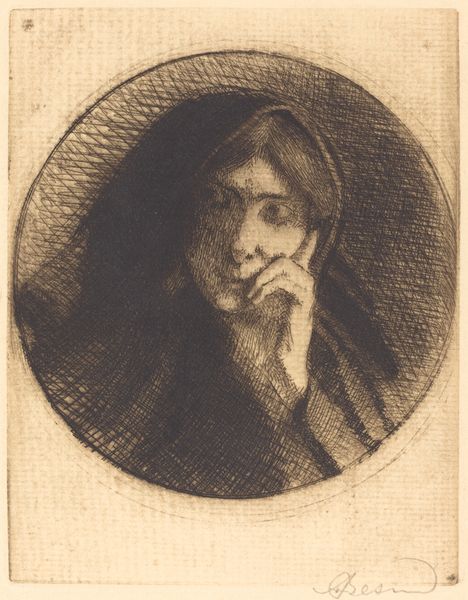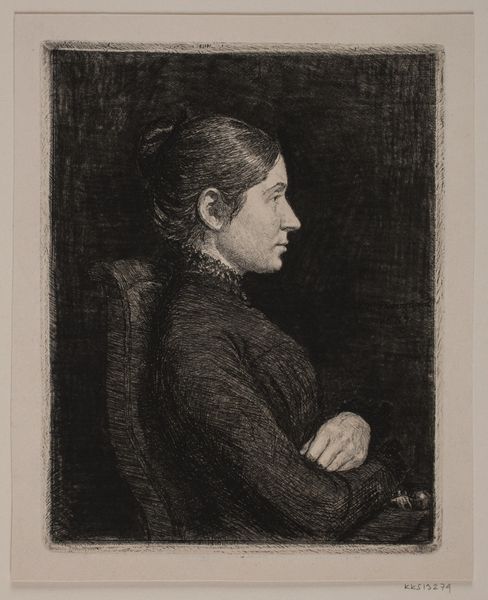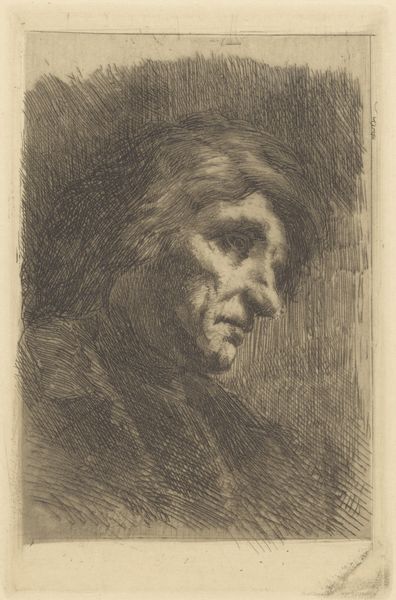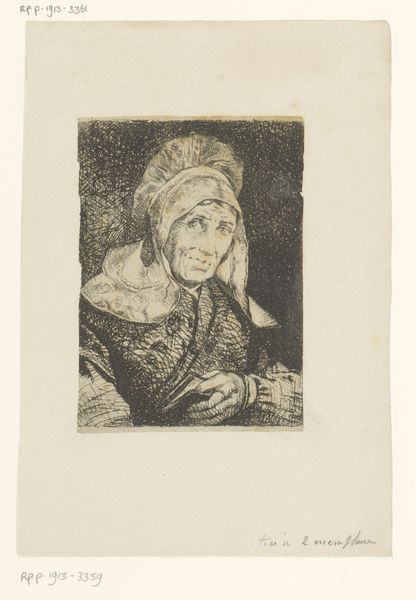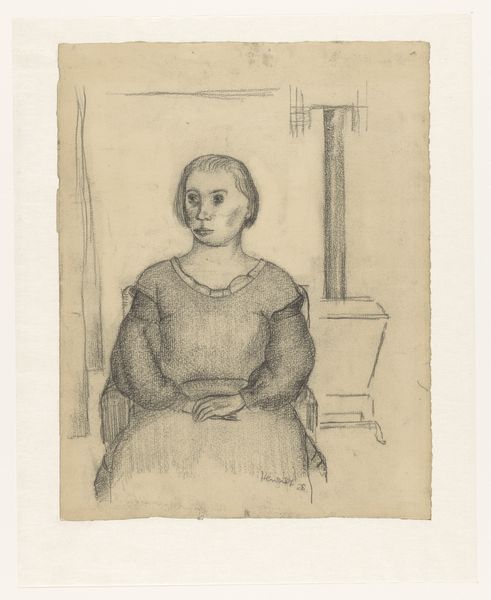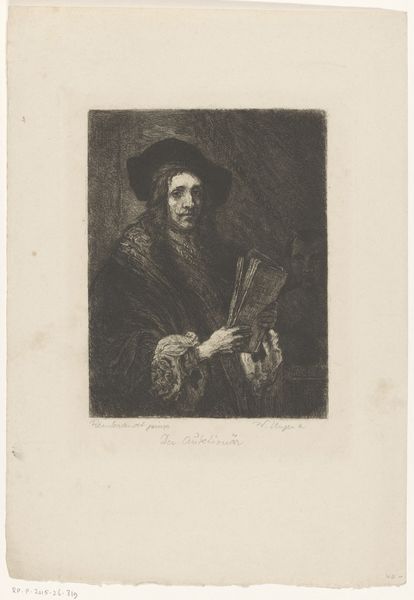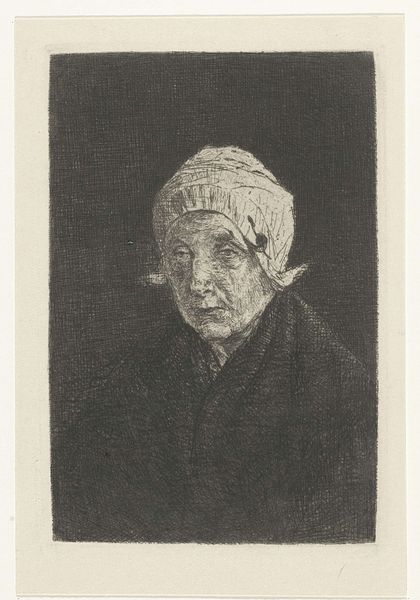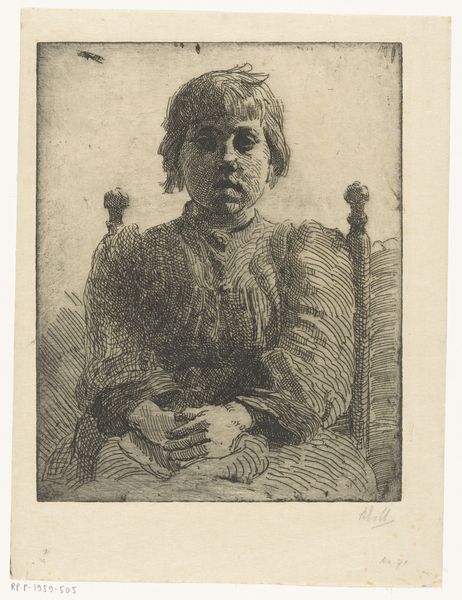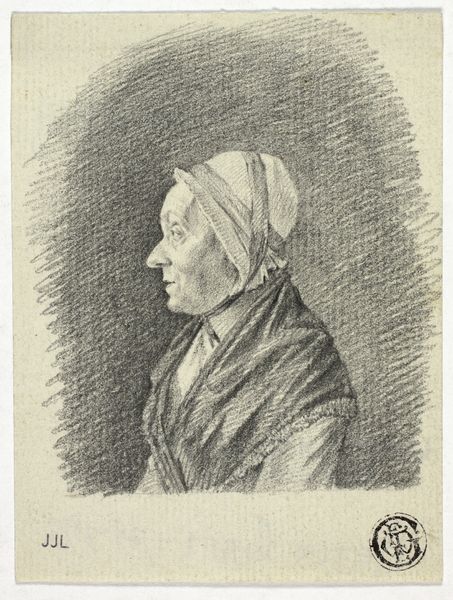
Dimensions: image: 18.1 × 13.65 cm (7 1/8 × 5 3/8 in.) sheet: 49.53 × 32.07 cm (19 1/2 × 12 5/8 in.)
Copyright: National Gallery of Art: CC0 1.0
Editor: Here we have Wilhelm Leibl's "Leibl's Mother" from 1874, created with graphite in a print medium. The immediate feeling I get is one of quiet contemplation. Her gaze seems inward, almost melancholic. The limited tonal range amplifies this. What do you see in this portrait? Curator: Oh, it whispers volumes, doesn’t it? For me, it's an incredible study in intimacy and the passage of time. Leibl wasn't just sketching his mother; he was tracing the story etched onto her face, those delicate lines mapping years of experience, hardship, perhaps even joy. And that framing – almost like a medieval altarpiece! It elevates her, doesn't it? Like she's a saint in her own private narrative. Look at how the hands are drawn, clasped together; are they at peace, or anxious? What do *you* think they say? Editor: I hadn't considered the altarpiece comparison; that’s a fascinating way to view it! The hands seem worn, suggesting a life of work, but there’s a stillness there, like acceptance. It’s more complex than just melancholy now that you mention it. Curator: Exactly! It’s the quiet strength, the resilience simmering beneath the surface. Leibl was a realist, after all. He wasn’t about idealizing; he wanted to capture the unvarnished truth of humanity. Isn’t it amazing how a simple graphite drawing can carry such emotional weight? And her gaze...do you feel that her eyes hold a glint of humor, as though life’s offered hard lessons alongside good? Editor: I do! Now, noticing those details, it shifts the entire mood for me. Thanks for that insight! Curator: And thank you! Art, at its best, it isn't about the final answer, but in looking deeper!
Comments
No comments
Be the first to comment and join the conversation on the ultimate creative platform.
